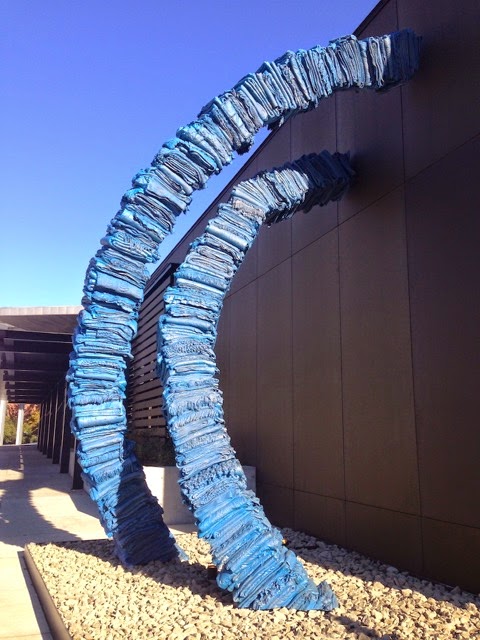New sculpture by Marie Watt at Tacoma Art Museum
Marie Watt is an American artist, born to the son of Wyoming ranchers and a daughter of the Turtle Clan of the Seneca Nation. Her work draws from Indigenous design principles, oral tradition, personal experience, and western art history.
Marie Watt working in her studio.
Watt has been creating large scale sculptures she calls Blanket Stories for several years. She uses blankets because she believes they provide an access to social connections, historical traditions, and have cross-cultural meanings.
Other Blanket Stories sculptures by Marie Watt
According to TAM curator Rock Hushka, "This sculpture reflects on the humble yet significant role blankets play in our lives, in Native American communities and in the settling of the West. The sum of these stories proves how we share a common humanity. They reveal how that a simple household item offers comfort, protection, and security across all human categories- race, gender, occupation, age. Blankets also represent sacrifice, generosity and emotional bonds."
Blanket Stories, detail (photo: Melissa Christy)
For the TAM commission, Watt collected blankets from members of the community, asking donors to share their memories and stories. I read the call for blankets online and after thinking about it, decided I did have one blanket that fit the criteria. I donated an old cream colored wool blanket stamped with the letters U.S. Navy on one side. The story I submitted follows:
This blanket was issued to my father, Philip Curtis Worden, when he joined the U.S. Navy in 1946. He didn't want to be a hero, he served so that he would become eligible for the G.I. Bill. After his time in the Navy, he went to Denver University where he became the first person in his family to graduate from college and eventually became a professor at Yakima Valley College in Yakima, Washington. The G.I. Bill was the instrument of change not only for my family, which went from working class to middle-class, but also for millions of other American families. My father taught me to value education, to love jazz music, and to live with and collect art. I wish to donate this blanket in his honor.
My father's blanket is number 202; photos of the individual blankets and stories can be found at the museum website, www.tacomaartmuseum.com. Click on Marie Watt's Blanket Stories, Browse blankets and the tag, military & veteran.
Blanket Stories: Transportation Objects, Generous Ones, Trek
(photo: Melissa Christy)
I can still remember the long train trip from Illinois when my family moved to Washington State. We got off the train in Tacoma, where my mother's parents were waiting for us.



















































